Cheapest & Most Reliable 3D Scanners — 3DPrint’s 2015 Buyer’s Guide
While most individuals are not skilled 3D designers, the one thing that’s so great about the 3D printing space is that you don’t need to be able to model your own products in order to make a 3D printer a worthy purchase. There are over 1 million available models online for anyone to download, most which are absolutely free. If, however, there is something you can’t find on the various model repositories, or you wish to replicate a common object or even a person, it may be time to purchase a 3D scanner. (We’ve also updated this list for 2016!)
There are numerous 3D scanners on the market. In fact it seems as if every week or two another product is announced. The sheer number of scanners that are becoming available can be incredibly overwhelming, especially if you have no idea what you really need. We’ve decided to make things a bit simpler for all of you, taking some of the guesswork out of the purchasing process. Below, with the help of the writers and editors at 3DPrint.com, and in a similar fashion to the 3D Printer Buyer’s Guide we published earlier this year, we have curated a list of some of our favorite 3D scanners based on price, usability, and quality of scan. This list will be updated on a consistent basis to reflect what we feel are the top devices on the market at any given time.
Matter and Form MFS1V1 3D Scanner
If you are looking for an affordable, accurate, stationary 3D scanner, there are few products which compete with the Matter and Form MFS1V1 3D Scanner. Don’t let the price of under $575 fool you. This device is an incredible addition to  any maker’s garage, or can also be the perfect fit for design studios and small businesses which required the scanning of smaller objects. You certainly can’t scan an SUV with this device, but with the ability to capture a staggering 2,000 points per second and scan at resolutions of around 0.43mm, this scanner will hold its own against any other stationary device on the market. Additionally it is able to fold up, collapsing to a size of just 3.5 x 8.35 x 13.5 inches, which combined with a weight of just under 7 pounds makes it incredibly portable. High resolution scans will take approximately 5 minutes and once a model is scanned, the software allows for the user to export it as a watertight 3D printable file with ease.
any maker’s garage, or can also be the perfect fit for design studios and small businesses which required the scanning of smaller objects. You certainly can’t scan an SUV with this device, but with the ability to capture a staggering 2,000 points per second and scan at resolutions of around 0.43mm, this scanner will hold its own against any other stationary device on the market. Additionally it is able to fold up, collapsing to a size of just 3.5 x 8.35 x 13.5 inches, which combined with a weight of just under 7 pounds makes it incredibly portable. High resolution scans will take approximately 5 minutes and once a model is scanned, the software allows for the user to export it as a watertight 3D printable file with ease.
Pros: Price, Scan quality, Portability, Ease-of-use
Cons: Limit on object size, Quality of construction
DAVID Laserscanner – SLS2 High Speed & Resolution 3D Scanner
If you can afford the rather steep price tag of $2995, this is an incredible buy. Produced by David Vision Systems, the Laserscan device will allow you to scan objects in 3D at 1280 x 800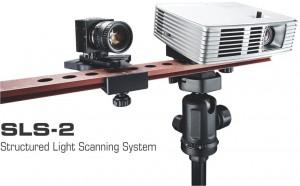 pixels. The quality of each scan (0.1% of object size — up to 0.05 mm) will simply blow you away, while accuracy is second to none at this price point. Relying on the company’s innovative Structured Light technology, this device will allow you to scan objects large and small (60-500 mm in size) in a matter of just a few seconds. Additionally the mesh density that this device allows one to achieve is a staggering 1,200,000 vertices per scan, which can be exported using any of the three main 3D model file formats, OBJ, STL and PLY.
pixels. The quality of each scan (0.1% of object size — up to 0.05 mm) will simply blow you away, while accuracy is second to none at this price point. Relying on the company’s innovative Structured Light technology, this device will allow you to scan objects large and small (60-500 mm in size) in a matter of just a few seconds. Additionally the mesh density that this device allows one to achieve is a staggering 1,200,000 vertices per scan, which can be exported using any of the three main 3D model file formats, OBJ, STL and PLY.
Pros: Quality scans, Reliability, Bang for the buck, Scan speed
Cons: Installation/setup time, Image processing time
Fuel3D Scanify Scanner
This is one of the more remarkable handheld scanners. Instead of requiring a user to move the scanner around an object, this device works just like your 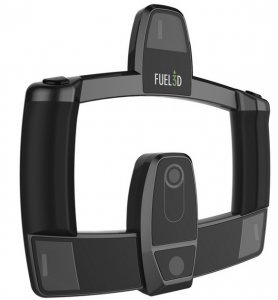 typical digital camera. Using pre-calibrated stereo cameras with photometric imaging, users can simply click a button and within a fraction of a second a 3D image is captured. While you will not be able to capture complete 360 degree 3D data, the scan area is quite large for not requiring any image stitching or movement on the part of the user. I have used this scanner in the past and can say it’s an impressive device for sure. Priced at just $1,500, it’s hard to go wrong with this camera/scanner.
typical digital camera. Using pre-calibrated stereo cameras with photometric imaging, users can simply click a button and within a fraction of a second a 3D image is captured. While you will not be able to capture complete 360 degree 3D data, the scan area is quite large for not requiring any image stitching or movement on the part of the user. I have used this scanner in the past and can say it’s an impressive device for sure. Priced at just $1,500, it’s hard to go wrong with this camera/scanner.
Pros: Incredibly fast, Accurate, Simplistic
Cons: Diminished viewing angle will not permit entire 360 degree scans
Occipital Structure Sensor
Like the 3D Systems’ iSense Scanner we have mentioned below, the Structure sensor by Occipital works in a similar fashion by attaching to one’s iPad. Priced under $380, this scanner is the most affordable on our list.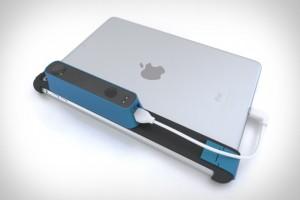 With scanning resolutions as high as 0.5mm and accuracies of up to 4mm, this scanner is perfect for the beginner as well as those with some experience within the space. Users are able to capture 3D imagery at distances between 40cm and 3.5m, making this device incredibly versatile. The scanner attaches to any iPad, version 2 and up, with ease, and is incredibly simply to set up. Although this is not a device if you are trying to scan intricate objects for replication via 3D printing, it is the perfect scanner for less intricate jobs.
With scanning resolutions as high as 0.5mm and accuracies of up to 4mm, this scanner is perfect for the beginner as well as those with some experience within the space. Users are able to capture 3D imagery at distances between 40cm and 3.5m, making this device incredibly versatile. The scanner attaches to any iPad, version 2 and up, with ease, and is incredibly simply to set up. Although this is not a device if you are trying to scan intricate objects for replication via 3D printing, it is the perfect scanner for less intricate jobs.
Pros: Price, Ease-of-use, Reliability
Cons: iPad required, Scan quality of smaller items
3D Systems’ iSense 3D Scanner
This scanner fits snugly onto your iPad, turning its 2D camera into a fully functioning 3D scanner. Made in the United States, this scanner is backed by one of the world’s largest 3D printer manufacturers, 3D Systems. While it may not have incredibly high resolution, this scanner is great for the beginner.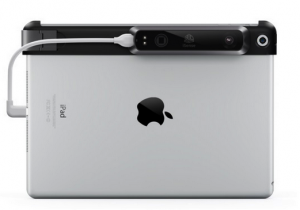 It can function at a scan distance of 3.5 meters and has a view field of 48 degrees vertically and 58 degrees horizontally. Since you aren’t paying for the actual computing power of the iPad, which you presumably already have, this is an exceptional bang for your buck. The battery lasts approximately 3-4 hours of active scanning or 1,000 hours at standby. This scanner is priced at just under $500.
It can function at a scan distance of 3.5 meters and has a view field of 48 degrees vertically and 58 degrees horizontally. Since you aren’t paying for the actual computing power of the iPad, which you presumably already have, this is an exceptional bang for your buck. The battery lasts approximately 3-4 hours of active scanning or 1,000 hours at standby. This scanner is priced at just under $500.
Pros: Price, Size/weight, Versatility
Cons: iPad required, Battery life, Scan quality
XYZprinting Da Vinci 1.0 All-in-One 3D Printer
If you don’t have a 3D printer yet, then this is the perfect product for you. Although the printer is not the best of quality, the price of $600 for both a 3D scanner and printer make the Da Vinci All-in-One machine a no-brainer if you are a beginner looking for an affordable scanning and printing 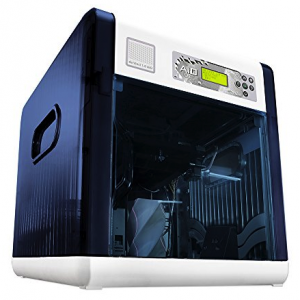 option in one. Using sophisticated scanning algorithms and asymmetric 2-way laser scanning technology, XYZprinting is able to integrate a decent scanner into this machine. The software that this machine comes with is exceptionally easy to use, and one can pretty much plug the printer/scanner in and begin using it within a few minutes. As long as there are no calibration issues, which sometimes can be a bit of a hassle, this is as close to a ‘plug and play’ device that you will find.
option in one. Using sophisticated scanning algorithms and asymmetric 2-way laser scanning technology, XYZprinting is able to integrate a decent scanner into this machine. The software that this machine comes with is exceptionally easy to use, and one can pretty much plug the printer/scanner in and begin using it within a few minutes. As long as there are no calibration issues, which sometimes can be a bit of a hassle, this is as close to a ‘plug and play’ device that you will find.
Pros: Price, Easy to use software, Two technologies for the price of one, Scan quality
Cons: Calibration issues, Speed
Artec Eva 3D Scanner
You may have noticed that all of the scanners we have mentioned above are priced under $3,000. We’ve 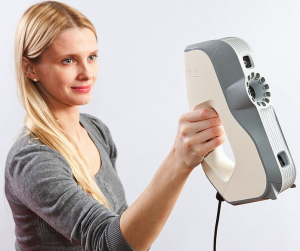 decided to add one higher price device to the list simply because of its incredible quality. Priced at $19,800, the Artec EVA is a monster of a handheld scanner. Artec has made a name for themselves within the 3D scanning space, and the Eva certainly does’t diminish that clout. With incredibly high accuracy of 0.1mm and resolutions as high as 0.5mm, this scanner only weighs 1.9 pounds. If you need a product which will be used for more than just tinkering around, the Eva may be the perfect fit.
decided to add one higher price device to the list simply because of its incredible quality. Priced at $19,800, the Artec EVA is a monster of a handheld scanner. Artec has made a name for themselves within the 3D scanning space, and the Eva certainly does’t diminish that clout. With incredibly high accuracy of 0.1mm and resolutions as high as 0.5mm, this scanner only weighs 1.9 pounds. If you need a product which will be used for more than just tinkering around, the Eva may be the perfect fit.
Pros: Scan quality and accuracy, Weight, Portability
Cons: Price
There you have it! Let us know if you have any feedback on any of these devices, or if you think another scanner should make this list. Discuss in the Best 3D Scanners of 2015 forum thread on 3DPB.com
Subscribe to Our Email Newsletter
Stay up-to-date on all the latest news from the 3D printing industry and receive information and offers from third party vendors.
Print Services
You May Also Like
New Business: Temporary, Migratory, & Modular 3D Printed Architecture
If we look at potentially emerging 3D printing businesses, then architecture has not been fully explored. Yes, there is a lot of house 3D printing going on worldwide. From deployable...
3D Printing News Briefs, April 19, 2025: Material Extrusion Standard, Metal Powder, & More
In today’s 3D Printing News Briefs, we’re covering a proposed standard for material extrusion, before moving on to business and metal powder. We’ll end with a commercial store’s robotic 3D...
Japan Unveils World’s First 3D Printed Train Station
Japan is now home to what we believe is the world’s first train station built with 3D printing technology. Located in Arida City, just south of Osaka, the new Hatsushima...
restor3d Raises $38M to Expand 3D Printed Orthopedic Implants
Backed by $38 million in new funding, restor3d is pushing ahead with the launch of four personalized implant lines, set to roll out in 2025 and 2026. This latest venture...


























